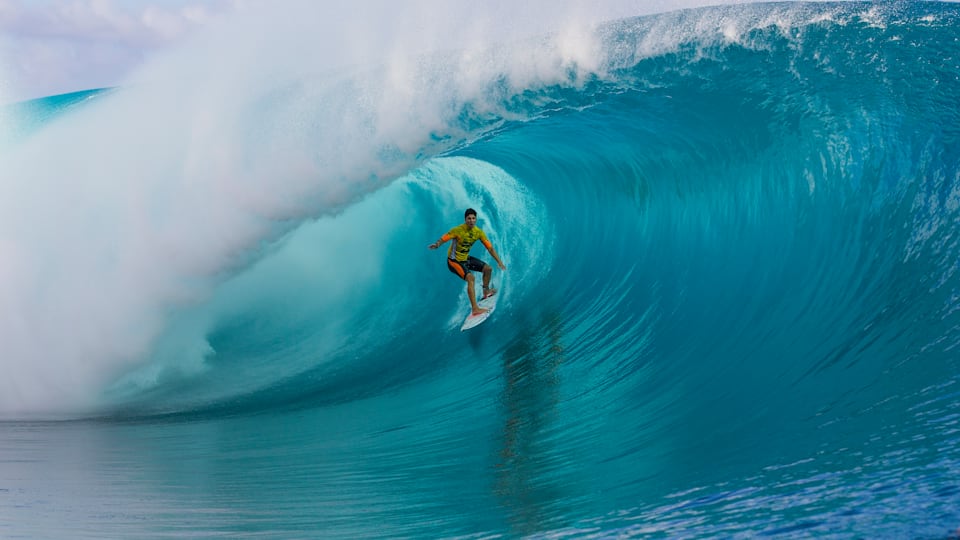Top facts about the Olympic surfing venue at Teahupo’o, Tahiti

Get to know more about the iconic wave that has been chosen as the surfing competition venue for the Paris 2024 Olympics.
Iconic, heavy, and extreme. As far as surfing waves go, Teahupo'o is as spectacular as you can get.
Teahupoʻo is a village on the southwestern coast of Tahiti, an Island in French Polynesia, located in the South Pacific Ocean.
The wave, pronounced 'Chopoo' and with the nickname 'Chopes' is approximately 400 metres offshore and known as the most famous reef break in the world. It's reputation precedes it with the glassy, mesmerizing tube.
But it's not a wave for the faint-hearted.
Between April and October each year, the worlds best surfers monitor the swell maps and forecast to try predict when the dreamy, left-hand barrel will be at it's best.
The wave is often two to three metres high and can sometimes even reach seven metres. But it's not the height of the wave that makes it unique, it's the combination of big barrels, heavy drops the riders need to make to get inside the wave, and the very shallow reef below. This wave is the ultimate test of a surfers commitment and barrel-riding ability.
With Tahiti set to host the Paris 2024 Olympic surfing competition, fans can expect a mesmerizing and thrilling spectacle.
Read on for what to expect from this stunning location.
The Teahupo’o wave explained
For many, the Teahupo’o wave is a natural wonder of the world.
Along with the crystal clear tropical water, the barrel is hollow, meaning the tube cylinder is very open. This makes for stunning images and incredible surfing, but makes for a tricky beast to tame as the big and powerful wave lands on a shallow reef.
In many parts there is only 50 centimetres between the reef and the surface of the water.
The heavy and thick liquid gem is created because of a change in depth on the sea floor.
Approximately 50 metres beyond the shallow reef, the sea drops to more than 50 feet (15 metres). This means swells coming towards the shore change from very deep water to extremely shallow waters over a short distance and space of time. This is why the waves rise up over the reef before crashing down with an immense amount of force and power.
With so much water surging, the wave has a very thick lip. This is the section of the wave that you see when the wave begins to curl over. Lots of water means a heavier and weightier wave which can make it difficult to get inside the wave. With such a shallow reef below, a large amount of bravery, fear and risk is required for every ride.
Barrel riding (also known as tube riding) is arguably the holy grail of surfing. It involves a surfer getting inside the most critical part of the wave and riding through the tube, with the goal of being spit out the other side. This glassy image of a circular blue ocean wall is what comes to mind when most surfers think of Teahupo’o.
Who does the wave suit?
Because Teahupo'o is a left-hand break, the wave peels to the surfers left.
This means when a surfer is paddling to catch the wave, they must turn to the left to ride along the wave. It also means goofy footers are better suited here because usually they prefer to go left.
A goofy footer is a surfer to doesn't have a regular stance and plants their right foot forward, left foot back.
So when we think about Paris 2024, we know this wave is well suited to goofy footers like Olympic Champion Italo Ferreira, three-time world champion Gabriel Medina, and fellow Olympians, USA's Caroline Marks, and Brazil's Tatiana Weston-Webb.
It would be remiss to not mention surfing legend, 11-time world champion Kelly Slater.
The 50-year-old is one of very few who is considered to have tamed the monstrous Teahupo'o wave on the World Surf League (WSL) Championship Tour. American Slater is the only person to score three perfect 20 heats, in 2005, 2013, and 2016.